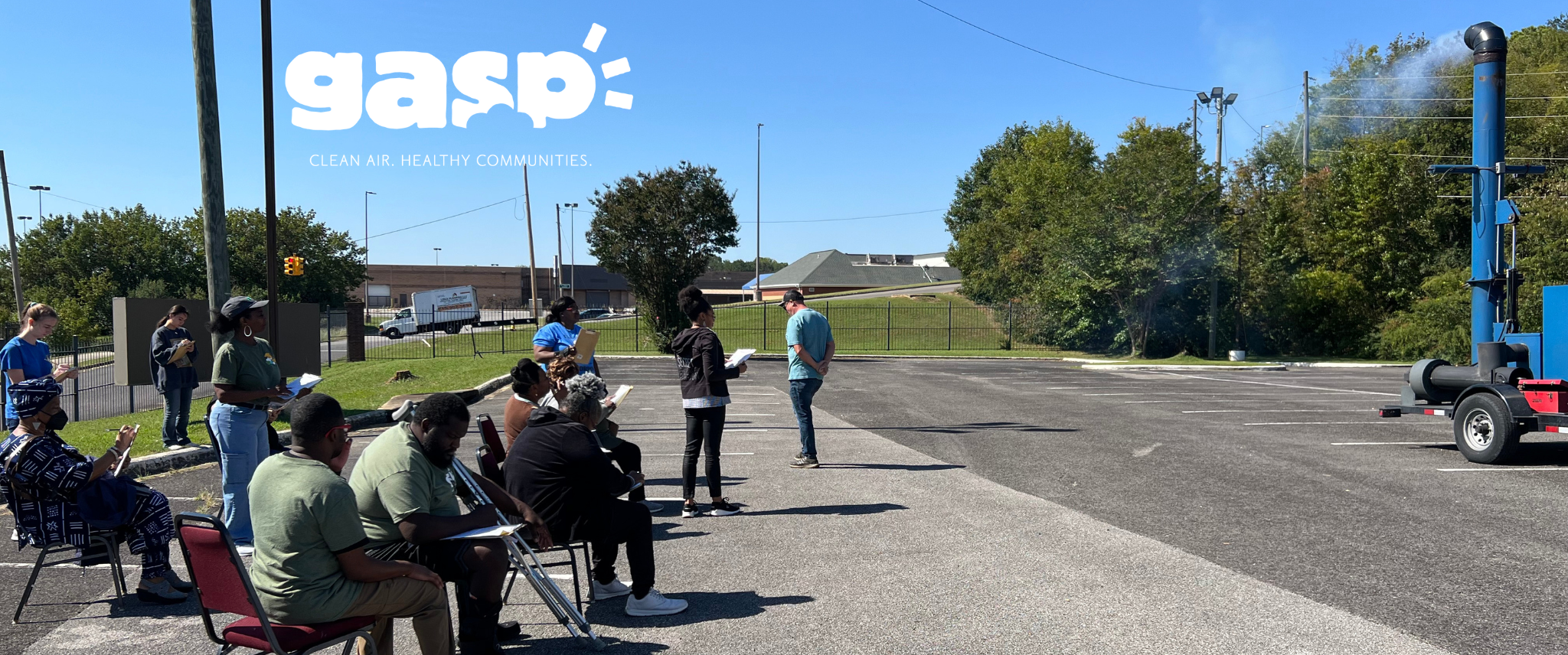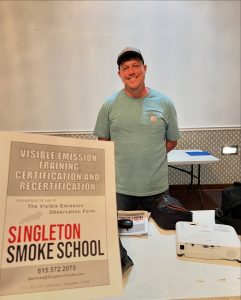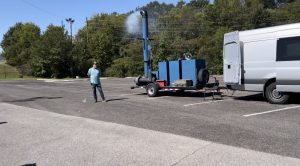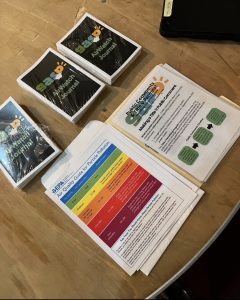On October 10th, I had the opportunity to attend GASP’s first-ever Smoke School training! Brad Singleton and his father, Fred Singleton, from Singleton Smoke School led the educational training. It was an immersive, four-hour session focused on training participants in visible emissions evaluations—a skill crucial for monitoring air quality in Birmingham, where industrial pollution remains a challenge.
GASP invited fifteen community members, activists, and advocates to join the session, all eager to learn how to assess smoke opacity and recognize particulate matter emissions. The turnout and enthusiasm showed me just how deeply our community cares about clean air and environmental justice. We walked away with new knowledge, hands-on skills, and, most importantly, certifications to help us identify visible pollution.
We met at the Fairfield Civic Center at 7:45 AM to begin our training. We needed to begin the training early while the wind and cloud coverage could not impact our readings. This would also give us enough time to get through all of the information we needed to go over that day. We fellowshipped over breakfast about how excited we were to be able to know exactly how to accurately read smoke opacities but still nervous about passing our certifications.
“What if I can’t pass?” I asked Brad.
“Everyone passes, even if you have to do it twice or three times, or four, you’ll get it. I promise.” He told us of only man being utterly unable to pass no matter how many times he tried but assured us that as eager as we were to understand, we would pass with his help.
The Singletons guided us through the complexities of emission evaluation, from understanding the regulations to learning how to assess the color and density of smoke plumes. Brad and Fred are experts in their field, and their commitment to helping communities like ours become active defenders of clean air was truly inspiring. They patiently walked us through the methodology and answered all our questions, giving us the confidence to apply these skills in real-life situations.
The energy in the room was infectious. It was more than a training session—it was a gathering of individuals ready to take on the responsibility of protecting our community’s air quality.
After explaining what different plumes and emissions could look like and how to best tell what qualified as actualpollution, it was time to put our newfound knowledge to the test. We exited the Civic Center and entered the parking lot where Fred operated a smoke generator. The smoke generator was a big blue machine that resembled a barbecue grill and similarly emitted smoke much like a grill would. Brad reassured us the smoke was not strong enough to harm us and did not contain harsh chemicals that could impact our health or community negatively. The smoke would simply help us identify the different levels of smoke opacity for our test.
Fred operated the generator within his truck by letting off practice smoke plumes for us to get acquainted with. He showed us how different levels would look and how to fall close within the range to rank our readings on our test papers. I studied closely, barely pausing to blink. I wanted to understand this and explain my new niche skill. I filled out my test paper ranking all 50 emissions Fred let go through the generator and waited for Brad to grade everyone’s paper.
“Well, you passed…barely. But you passed.”
I let out a breath of relief.
“I’ll take it!”
I couldn’t help but feel a renewed sense of purpose and pride in the work GASP does, knowing that I was now part of a certified group trained to hold polluters accountable.
As someone who cares deeply about environmental justice, I believe programs like Smoke School are vital for our city. Birmingham’s legacy of industrial pollution has affected too many families and neighborhoods, and being equipped to recognize visible emissions is a powerful tool for change. Each of us is now part of a growing network of clean air advocates ready to make a difference.
What was even more exciting was the opportunity to learn we could do it all again. To remain certified in evaluating visible smoke opacity, participants must retest every six months. Each attendee left certified and with a GASP pollution tracking journal to help them judge future emissions they encountered in everyday life. I hope to see everyone attend again in April to get re-certified.
GASP’s Smoke School is just one of many ways we’re working toward a healthier Birmingham. I’m proud to have taken part in this training, and I look forward to seeing how our new skills will help us protect the health and well-being of our community.
If you’re passionate about clean air and want to get involved, I encourage you to pledge your support of GASP through our community health programs like AirWatch so that we can host future Smoke School sessions. Together, we can push for the accountability and transparency our city needs to ensure everyone breathes safe, clean air.







